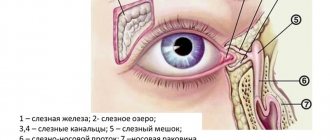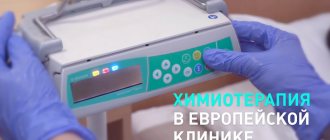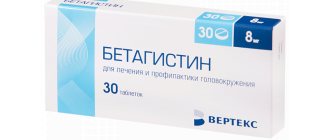Every person is familiar with the feeling of numbness in the hands, when the loss of sensitivity in the area of the hands is accompanied by a slight burning or tingling sensation. This phenomenon is explained by a disruption of normal blood flow to the distal parts of the upper extremities, caused by compression of blood vessels or nerve fibers. In most cases, such changes are temporary phenomena. Sensitivity is restored immediately after changing body position, during movement and similar actions.
Why do my hands go numb?
Unfortunately, an uncomfortable body position during sleep is far from the only cause of numbness in the hands. Sometimes loss of sensitivity in a given area is a symptom of a pathological condition that needs to be corrected.
Among the most common pathological causes of numbness in a patient’s hands, experts identify:
- osteochondrosis of the cervical spine, in which the neurovascular bundle is compressed by destructive elements of the vertebrae, as a result of which a person’s hands begin to go numb, as well as a headache and signs of poor coordination;
- multiple sclerosis, in which demyelination of nerve fibers occurs and the passage of nerve impulses through them deteriorates, leading to a feeling of loss of sensitivity in the upper extremities;
- carpal tunnel syndrome or carpal tunnel syndrome, when the median nerve is pinched by a swollen tendon (the pathological condition is typical mainly for patients over 35 years of age who perform monotonous work with their hands for a long period of time, which leads to damage to the tendon tunnel of the wrist);
- cubital tunnel syndrome – compression of the ulnar nerve at the level of the joint of the same name, which, in addition to numbness of the hands, is accompanied by shooting pains;
- anterior scalene syndrome – compression of the brachial plexus in the interscalene space in the neck;
- thrombosis of the venous vessels of the upper extremities is a relatively rare pathology, when the blood flow to the tissues of the hand is blocked by a thrombus;
- brachial plexus neuralgia, in which prolonged inflammation provokes tissue swelling and compression of the neurovascular lines, resulting in symptoms of numbness in the extremities of the hands, tingling, burning;
- disturbance of cerebral blood flow (stroke, transient ischemic attack) is the most dangerous variant of the pathology with numbness of the hands, which threatens a person’s life and is also manifested by confusion, movement disorders, intense headaches and complex speech disorders.
A symptom such as numbness in the hands cannot be ignored. If such disorders appear, which are prone to recurrence, you should immediately contact specialists and establish the true causes of the pathological condition, which will allow for truly effective treatment.
Treatment
Pre-hospital assistance
In case of numbness due to neurological diseases, it is necessary to exclude loads that provoke an increase in symptoms, and take regular breaks to rest the hands. In case of traumatic injuries, the injured segment of the limb should be fixed or the victim with a spinal injury should be placed on a backboard and given an anesthetic. Increasing swelling, intense pain, followed by numbness of the limb, are reasons for immediate contact with a specialist.
Conservative therapy
The treatment regimen for neurological causes of hand numbness includes the following areas:
- Pain relief
. Drugs from the NSAID group are used; in case of severe pain, a blockade is performed with an anesthetic or a mixture of an anesthetic and a corticosteroid drug. - Normalization of muscle tone
. Tolperisone, methyllycaconitine hydroiodide, and baclofen are effective in reducing muscle tone and eliminating spasms. - Improving blood circulation
. To improve blood supply and stimulate venous outflow, pentoxifylline, aminophylline, and troxerutin are recommended.
Patients are prescribed B vitamins and diuretics to eliminate edema. According to indications, the treatment plan is supplemented with chondroprotectors. Chronic pain may require antidepressants. The list of non-drug methods includes ultraphonophoresis, UHF, hydrotherapy, therapeutic mud, ozokerite and paraffin applications. An important role is given to massage, exercise therapy, manual therapy, and reflexology.
For Takayasu's disease, immunosuppressants, antiplatelet agents, and anticoagulants are recommended. Plasma cascade filtration, lymphocytapheresis, and plasmapheresis are performed. For thromboangiitis, antispasmodics, NSAIDs, and agents to improve the rheological properties of blood and activate local metabolism are used. They give a referral for ILBI, hyperbaric oxygenation, hemosorption.
Surgery
The tactics of surgical intervention are determined by the nature of the pathology that provoked numbness of the hands. Neuralgia due to nerve compression by a tumor, scars, fibrous or bone growths are considered as an indication for neurolysis, tumor removal or decompression intervention.
For spinal pathologies, discectomy, scoliosis correction, and operations to eliminate spinal stenosis and instability of the spinal column are used. The cause of brachial plexitis is eliminated by removing cervical ribs, excision of tumors and aneurysms, and correcting the position of fragments in fractures.
Numb hands at night
Night hand numbness is typical for patients of any age. In the vast majority of clinical cases, its causes are degenerative-dystrophic changes in the cervical spine. Less commonly, such a pathological condition can be caused by heart disease, which cannot be left without medical attention.
The most common causes of numbness in the upper extremities at night include:
- incorrect neck position during work or night rest;
- long periods of time in front of the computer;
- the presence of osteochondrosis of the cervical spine;
- hernia or protrusion in the cervical spine (especially if we are talking about damage to the lower cervical vertebrae, in the spaces between which the nerves innervating the arms emerge;
- metabolic disorders in the body;
- tunnel syndrome or compressed nerve syndrome;
- diseases of the cardiovascular system;
- abuse of alcoholic beverages and nicotine;
- deficiency of B vitamins in the human body.
To get rid of night numbness of the hands, it is necessary to establish the true causes of this pathological condition. This will allow the doctor to understand the essence of the disorders and prescribe truly effective and correct therapy to the patient. It is important to understand that competent and timely diagnosis of the problem is the key to success on the path to solving it. Therefore, when the first signs of a painful condition develop, you should not waste precious time, but immediately contact a doctor who will help you get rid of the disorders.
How to treat numbness
First, the doctor must do an examination. It's best to see a therapist. Tests are ordered. Depending on the results, the patient may be referred to one of the following specialists:
- Neuropathologist.
- Endocrinologist.
- Phlebologist.
After this, accurate diagnostics are performed in the form of MRI, electrocardiogram and x-ray.
Treatment also depends on the source of the disease. If the pathology is associated with the musculoskeletal system, massage and therapeutic baths are prescribed. Medicines also prescribed:
- Gel, ointment or cream.
- Painkiller.
- Anti-inflammatory drugs that do not contain steroids.
If the cause of numbness is a lack of vitamins, it is necessary to take a series of vitamins and minerals based on the elements that the body needs.
Note! Some vitamins should only be taken in combination with others.
Traditional therapy can also be effective; it complements the main treatment. For example, for kidney disease and diabetes, a diet is prescribed, and for injuries, immobilization is prescribed.
Numbness of the left hand
If your left hand is numb, you should always think about whether a person has heart disease, from mild forms of pathology to very complex and even deadly variants. What heart diseases can numbness in the left arm indicate? Pathological conditions that are accompanied by deterioration of sensitivity in the upper limb on the right include:
- high blood pressure of various origins;
- angina pectoris;
- myocardial infarction.
All these heart diseases require attention from a cardiologist, as they are fraught with consequences and can cause death in the patient.
If numbness of the left arm does not go away after changing body position, lasts more than one hour and is accompanied by pain in the area behind the sternum, then the patient should immediately seek qualified help.
Treatment of pins and needles and goosebumps in the hands at the MART clinic
Goosebumps in the hands, pins and needles, numbness and other similar sensations in the hands, as a rule, indicate the presence of serious disorders in the body. Some of them can even be dangerous, and therefore you should not try to solve the existing problem yourself or using traditional methods. Prescribing the necessary treatment for goosebumps, burning sensations, pins and needles and other discomforting sensations in the right or left hand is possible only after determining the exact cause of their occurrence.
To identify the cause of paresthesia in the hands, it is necessary to undergo a thorough examination, which is recommended to begin with a visit to a neurologist. Effective treatment can only be prescribed by a doctor based on examination and additional research methods: laboratory tests, ECG, MRI, ultrasound.
At the MART medical center, treatment courses for pins and needles in the fingers and goosebumps in the hands are selected individually. If osteochondrosis or other neurological pathologies are detected, manual therapy, therapeutic massage and regular exercise therapy are prescribed. Physiotherapeutic procedures and reflexology are also used to restore normal sensitivity in the hand.
Sign up at the MART medical center in St. Petersburg (see map) by phone, or leave a request on the website.
Numbness of the right hand
As a rule, numbness in the right arm at night occurs mainly in people who suffer from disorders in the cervical spine. Diseases that are responsible for such changes include osteochondrosis, spondylosis, as well as hernias and protrusions of intervertebral discs.
In addition to numbness in the hands, such patients will have other symptoms of these diseases, which in practice manifest themselves as dizziness, pain in the neck and upper limbs, headaches, deterioration of cognitive functions, etc.
In addition, numbness in the right hand at night may indicate carpal tunnel syndrome, or carpal tunnel syndrome, in which the nerves in the wrist area that go to the tissues of the hand are compressed. Carpal tunnel syndrome occurs in people who perform the same type of work for a long time with a fairly high level of load on the joint. With this disease, loss of sensation can be observed in the entire hand or spread only to the fingers.
Sometimes numbness of the fingers on the right hand is accompanied by polyarthritis of small joints. With this scenario, numbness is accompanied by morning stiffness of the joints, pain when doing work with the hands, and the inability to fully hold objects.
Metabolic disorders are another common reason why a person experiences a feeling of numbness in the hand while resting at night. This disorder is typical for diabetes mellitus, some urinary diseases, and liver pathologies. Therefore, when such a symptom appears, it is always necessary to undergo a comprehensive examination of the body.
Preventive measures
Hand numbness is much easier to prevent than to cure. For the purpose of prevention, you should follow certain procedures, monitor your diet, not worry about trifles, and adhere to a healthy, proper lifestyle.
In order to improve blood circulation in the arm and prevent the development of pathologies of the cervical spine, it is useful to perform the following exercises:
- Sit on a chair, grab your shoulders with your hands and perform circular movements with your joints ten to fifteen times with successive repetitions.
- Cross your fingers, place them on the back of your head, keeping your elbows at the same level, and then squeeze and spread your joints about fifteen times.
- Stand straight, spread your legs at shoulder level, place your hands on your hips. Perform body turns to the right and left ten times.
- As you inhale, raise your arms up, and as you exhale, gently lower them down.
- Stand straight and turn your head in both directions alternately, then tilt it towards each shoulder ten times.
- Rotate your head first counterclockwise, then in the opposite direction. It is advisable to perform this exercise while sitting, carefully monitoring your well-being.
Which doctor should I contact?
First of all, when attacks of numbness in the hands occur, a person should seek advice from a neurologist (neurologist). It would also be a good idea to have an examination with a vertebrologist who can diagnose the presence of problem areas in the cervical spine.
In a number of clinical cases, the patient may need consultation from related specialists, namely: an orthopedist, therapist, cardiologist, endocrinologist or vascular surgeon. If a neurologist decides that there is a need to see doctors from other specialties, he will definitely refer the patient to the right specialists.
It is important to understand that the true cause of the development of the pathological condition can only be determined by a qualified doctor with experience in this field. Therefore, the only correct solution to the problem of numbness of the upper extremities is its timely diagnosis and treatment by specialists.
Diagnostics
The etiology of hand numbness is determined by a neurologist. In case of vascular pathology, consultation with a vascular surgeon is required. The specialist examines the history of the disease, assesses the condition of the limb, pulse in the arteries, identifies swelling, signs of inflammation, and other changes. A neurological examination includes the study of sensitivity, reflexes, and muscle strength. Based on the results, the following are assigned:
- Electrophysiological studies
. ENG, EMG, evoked potentials are carried out to differentiate damage to nerves, muscles and structures of the central nervous system, to clarify the location and degree of damage to the nerve trunk. - Radiography
. Performed for injuries, suspected compression of nerves by bone growths, neoplasms. Visualizes fractures, dislocations, osteophytes, bone deformities. - Vascular studies
. Informative for scalene muscle syndrome, Takayasu's disease, thromboangiitis obliterans. To determine the localization and severity of occlusion, vascular ultrasound, angiography, and aortography can be performed. - Other visualization techniques
. Computed tomography and magnetic resonance imaging are performed for diseases and traumatic injuries. Prescribed in case of ambiguous results of basic studies and planning of surgical interventions. - Lab tests
. Recommended for confirming the infectious and dysmetabolic genesis of polyneuropathies and diagnosing Takayasu’s disease.
Acupuncture






